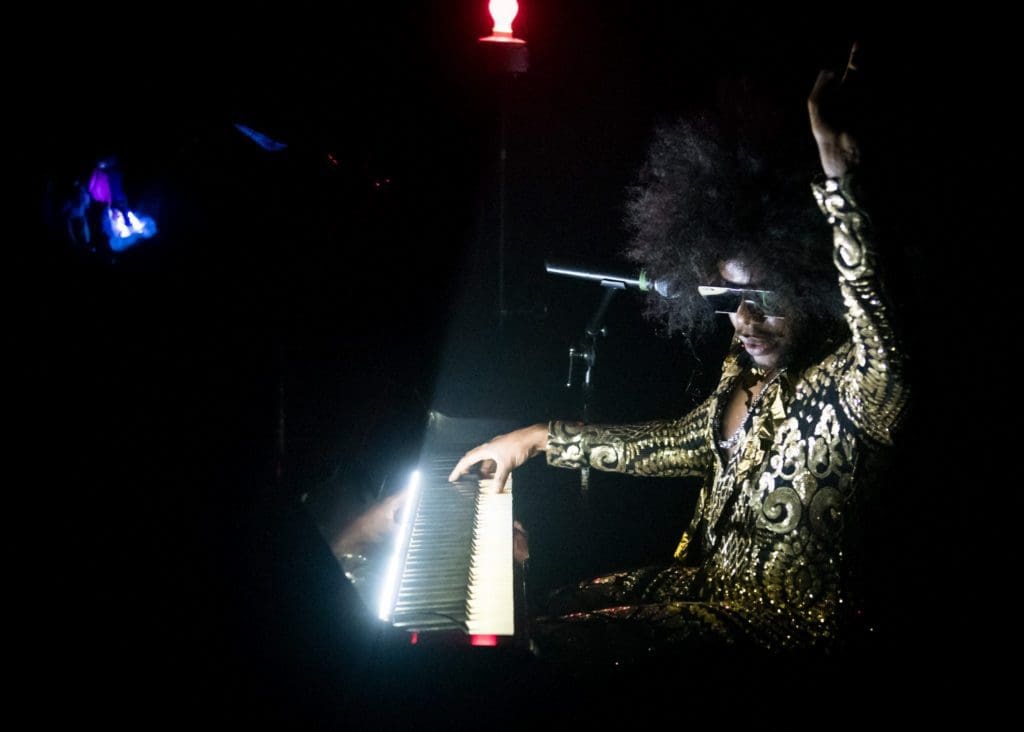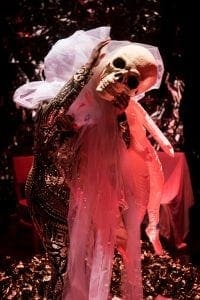Wake Work: An Interview With Jaamil Olawale Kosoko
Nigerian–American curator, poet, and performance artist is far more acquainted with loss than a person his age should be. At 34, he is the only living member of his immediate family. In a recent interview with the podcast Terrible, Thanks for Asking, he detailed his tumultuous upbringing and the devastating losses that have marked his life. Kosoko is quick to note that his story is not extraordinary, that the pain and hardship he’s experienced is far more common than some might care to acknowledge. However, what is unique about Kosoko’s story is his ongoing journey towards “post-traumatic enlightenment,” which has seen him allowing grief to inform his artistic process and letting his work inform his healing process. “In grief work, you may know that in order to help someone move beyond a hard moment, there’s this idea of a transitional object,” he notes in the episode, adding, “That’s really what my creative work is doing for me.”
This weekend, Kosoko will bring his latest work, Séancers, to FringeArts and as the show’s title suggests it is one that approaches loss head on. Presented as a literal séance, complete with a different guest artist/theorist who helps frame the witnessing of each performance, it explores the ways in which the American racialized body uses psychic, spiritual, and theoretical strategies to shapeshift through loss and oppression in surreal and fantastical fashion. “I’m thinking a lot about trying to heal, strategies of survival that have been embedded in black thought, black life, really since black people landed on the Americas—about larger societal traumas and my own personal traumas and how they’re engaged in this dance,” Kosoko shared in a recent The New York Times profile. In this way, Séancers reaches beyond personal loss to encompass cultural loss as well, particularly those that relate to rituals, to old modes of congregating among African-Americans that Kosoko sees as extinct or dying.
Recently, FringeArts caught up with Kosoko to learn more about the theories and art that informs Séancers and what audiences can expect to witness.
FringeArts: What made you think up the title Séancers?
Jaamil Olawale Kosoko: My previous piece #negrophobia was described as a kind of séance as I toured it throughout Europe over the past couple years. It felt like a natural progression to lean more into themes of paranormal activity, loss, and resurrection as it relates to Black identities. Of course I’m also thinking a lot about Black theory, which has been incredibly healing and informative for me as a way to come to terms with personal and societal trauma. Black conceptual technologies such as fugivity (Fred Moten), afro-pessimism (Frank Wilderson), and intersectionality (Kimberlé Williams Crenshaw) have given me a deeper intellectual framework to ground the ideas and metaphors that are situated inside my new work, Séancers. Lastly, the work has literally become a way for me to stay in close relationship to my dead family. I’m the only living member of my immediate family.
Have a listen to an interview I recently did here.
FringeArts: How did you decide on the themes you wanted to explore for Séancers?
Jaamil Olawale Kosoko: There are four pieces of creative works by black women in particular that serve as inspirations and/or musings for Séancers.
1) “Power” by Audre Lorde from her 1978 poetry collection The Black Unicorn.
2) Howardena Pindell, who is an exceptional performance artist from Philadelphia. Her piece Free, White, and 21 (1980) was another anchor that I discovered later in the creative process.
3) The public theologian Rudy Sales has an incredible speech that she give as part of an interview with Krista Tippett, “Where Does It Hurt?”
4) Another really important text for me was Christina Sharpe’s 2016 release In the Wake: On Blackness and Being where she asks the pivotal question. “What does it mean to defend the dead? To tend to the Black dead and dying: to tend to the Black person, to Black people, always living in the push toward our death?” She encourages us to do the work of the wake, or “wake work” specifically, to engage in the radical care needed to heal ourselves and each other who exist in the afterlives of The Middle Passage.
All four of these works are pillars upon which Séancers is held up. These works gave me a deeper understanding of the world I was trying to create.
FringeArts: How do you approach your costumes for Séancers?
Jaamil Olawale Kosoko: Costumes provide a place for levity and spontaneity. Because my work is quite heavy, costumes allow me an access into alternate realities and characters.
FringeArts: How did you come about bringing in the key creative collaborators that you did for this project?
Jaamil Olawale Kosoko: Many of the collaborators in this work, I’ve known for years. My work is quite personal, so I can’t allow just anyone into my process. It’s also important to me that I center and support People of Color, queer, women, and gender variant individuals within my creative practice.
FringeArts: What have you worked on most in fine-tuning Séancers?
Jaamil Olawale Kosoko: I’ve worked deeply on the visual installation and the performative cadence of the work. I’m more specific about design choices overall. I think I’ve grown most as a visual designer over the past couple years.
Séancers
Jaamil Kosoko Performance
May 10-12
FringeArts
140 N. Columbus Boulevard
$29 general
$20.30 members
$15 student/25-and-under
Interview by Josh McIlvain, December 2017.





